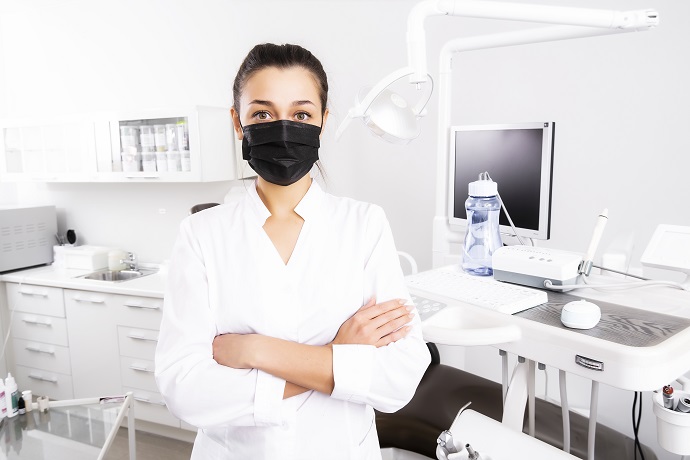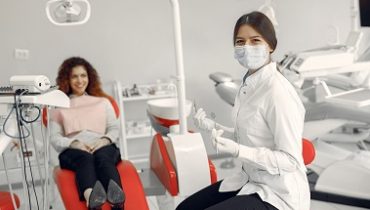
COVID-19 Dentistry: 5 Ways to Care for Your Teeth During the Outbreak
In view of the recent COVID-19 pandemic, our dynamics of mundane ‘normality’ has shifted. While the world is battling this unpredictable virus with stealth and caution, we have been laying low and trying to reinforce control in our personal lives, be it killing boredom by cooking up a beastly snack or taking up new skills that we have long been curious about. These are unprecedented times and people are doing all they can to get a pass at continuity. While mental health takes a priority during these unrelenting times, you should also remember to take care of your body, cue the teeth talk! With most dental services closed off temporarily, we are here to help you maintain proper dental care and hygiene through this pandemic.COVID-19 pandemic dentistry and how can you care for your teeth?
 With dental offices on a strict shutdown or offering only emergency services to the public, you may start to grow increasingly concerned about your dental health, especially if you have had a prior issue with your dental condition. Here are the top five ways to help you effectively deal with your dental issues without having to go to the dentist!
With dental offices on a strict shutdown or offering only emergency services to the public, you may start to grow increasingly concerned about your dental health, especially if you have had a prior issue with your dental condition. Here are the top five ways to help you effectively deal with your dental issues without having to go to the dentist!
- It’s time for round-the-clock dental hygiene!
- Brush twice daily: The American Dental Association (ADA) recommends all individuals to brush at least twice a day with a soft-bristled toothbrush. Dental plaque or tartar can start depositing on your teeth as early as two hours of oral cleansing or food consumption. Plaque contains harmful bacteria that can cause tooth decay and gum disease, so scrub away!
- Proper brushing technique: While it may seem rather foolish to doubt your brushing skills, there actually is a right way to brush. Angle your toothbrush 45 degrees to your gums and tilt it on the sides, vertically, and in a back-and-forth movement to reach all teeth surfaces.
- Choose a fluoride toothpaste: All toothpaste with the ADA Seal of Acceptance must contain fluoride. Fluoride helps repair the enamel by replenishing lost calcium and phosphorus required to keep the teeth hard and strong. This process is known as remineralization. Check the labels of toothpaste brands in your local supermarket next time you do your shopping rounds.
- Choose the right toothbrush: While regular soft-bristled toothbrushes are adequate in ensuring proper oral hygiene, you may find it even more impressive switching to an electric toothbrush. Many dental brands such as Oral B swear by their power toothbrushes, strongly claiming that they offer superior cleaning to regular manual toothbrushes.
- Discard your oldies: Toothbrushes are required to be replaced every three or four months or sooner. A worn toothbrush with frayed bristles will not do a good job of cleaning your teeth.
- Floss your teeth: In conjunction with brushing twice daily, the ADA recommends all to floss at least once a day to get rid of any proximal gunk in between your teeth.
- Center in on what’s on your plate!
- Avoid excessive snacking: Comfort-eating dollops of unhealthy, fast foods frequently can not only result in plaque accumulation on your teeth but can also negatively impact your physical and mental state-of-mind.
- Limit the three S’s – Sugary, Starchy, Sticky: Harmful bacteria in your mouth use sugar from foods and drinks to produce acids that dissolve the teeth surfaces, resulting in cavities. Foods high in sugar, acids, and starch and “sticky” like energy drinks, hard candies, and processed foods accelerate the formation of cavities.
- Drink plenty of water: Keep yourself hydrated throughout the day by drinking lots of water. Water helps wash away leftover residue from foods off of your teeth and dilutes the acids produced by the bacteria.
- Avoid hard foods: Dentists recommend avoiding hard foods such as popcorn, or candies that can not only crack a tooth or filling but may also damage braces or other dental appliances in the mouth.
- Get rid of harmful habits: Smoking inhibits sufficient blood supply to the gums whereas alcohol dries out the mouth and accelerates the development of gum disease. Finger or nail-biting, chewing on ice caps, or biting on objects inherent with stress-relieving can be detrimental to the teeth.
- Dealing with the troubles of toothache
- Warm saline water: Rinse your mouth with a warm saline solution for toothaches or gum pains.
- Apply cold compression: Ice packs applied on the skin of the inflamed or painful areas can help numb the pain and lower swellings.
- Clove or clove oil: Many traditional Indian remedies suggest clove oil for numbing the nerves. Simply soak a ball of cotton with a few drops of clove oil and apply on the affected area or chew on the whole clove until the pain subsides.
- Peppermint tea: Peppermint tea has also proved effective in numbing toothaches. Boil some peppermint leaves in a cup of water and swish around your mouth as it cools.
- Hydrogen peroxide: An oral rinse with a 3% hydrogen peroxide solution is known to kill bacteria and alleviate some discomfort.
- Crack open fresh ideas for your broken tooth
- Carefully handle the tooth by the crown (top of the tooth) without touching the tooth root.
- Rinse the broken piece of tooth carefully to remove all the dirt and debris. Do not scrub.
- If possible, reinsert the tooth back into the socket.
- If you are unable to reinsert the tooth, place it in a container filled with milk, and contact your dentist as soon as possible to increase the chances of saving your tooth.
- In case the dental pulp has been exposed, rush to the dentist as you may require a comprehensive root canal therapy.
- Use cold compressions for any swelling.
- The Harvard Medical School also suggests covering up the sharp edges of the remaining tooth with dental wax or chewing gum to protect the gums.
- Avoid having to go to the emergency room!
- Brush your teeth regularly along with flossing and mouth rinses.
- Avoid biting down on hard foods like ice, popcorn kernels, or candies.
- Prevent yourself from getting into physical altercations with your peers.
- Make sure you use protective gear while playing contact sports.
- Avoid tearing plastic packets with your teeth; use scissors.
- Maintain proper nutrition in your day-to-day.
- Hydrate!




